SoftExpert BPM: Business Process Management Software
SoftExpert BPM is a process management software that improves visibility and control of business processes through a user-friendly, human-centric solution. The solution encourages continuous process improvement throughout the organization. Scroll down for more details.
- Shipping:
Learn More
SoftExpert BPM is a process management software that improves visibility and control of business processes through a user-friendly, human-centric solution. The solution encourages continuous process improvement throughout the organization. It manages every stage of the organizational lifecycle, from modeling and optimization to automation, execution and monitoring.
The solution provides a powerful modeling tool based on the BPMN (Business Process Model and Notation) standard. This tool allows you to use events, activities, tasks, decisions, streaks and other elements to quickly create executable, drag-and-drop processes in a 100% web environment. Users can quickly create processes and business rules, add functional roles, create user-friendly interfaces, customize forms, and manage all related content in an integrated way.
Cases which involve complex interactions between content, people, transactions, and business or regulatory policies are fully supported by SoftExpert’s process management solution. SoftExpert BPM was built with Case Management requirements in mind, delivering a better understanding of the business, greater agility, and a bigger impact on strategic results.
SoftExpert BPM solves the challenges of people-to-business interaction using task management and collaborative resources. Users can monitor and gain visibility by tracking real-time processes, using mobile devices such as tablets and smartphones. The performance snapshot helps in making decisions and resolving specific situations.
SoftExpert BPM also includes enterprise-level capabilities such as monitoring for business activities and metrics, decision management, document management, quality assurance, system integration tools and dashboards. It is able to store process models in a native process repository with full version control, hierarchical categorization, search capability, and role-based security for controlled access to each model. It also further delivers on your process automation goals, supporting RPA (Robotic Process Automation) capabilities. In short, SoftExpert BPM delivers process control to the business while allowing IT to change its focus from maintenance to driving innovation.

Main Benefits
- Reduces the number of FTEs (full-time employees) needed to perform non-value-added functions within the organization.
- Cuts overtime labor costs by automating and optimizing manual tasks, thereby directly reducing outbound cash flow.
- Significantly lowers the amount of time spent responding to customer inquiries by continuously improving and monitoring customer service processes.
- Eliminates revenue losses by enforcing rules and processes related to strategic planning mandates.
- Avoids audit fees by providing a means to quickly create processes to track compliance efforts.
- Promotes collaboration between IT and business users to document and implement the process.
- Monitors the performance of individual processes or aggregates and potentially identifies trends.
- Transforms raw process data into valuable process intelligence to drive strategy and business performance enhancement
- Eliminates rework and promotes standardization and transparency throughout the organization, increasing employee motivation.
- Ensures real-time visibility and productivity as a result of process automation.
- Increases customer retention rate, reputation, market share and revenue by improving customer satisfaction.
RQUEST A DEMO
Features
- PROCESS MODELING
Friendly end-user tool for process modeling and business rules definition.
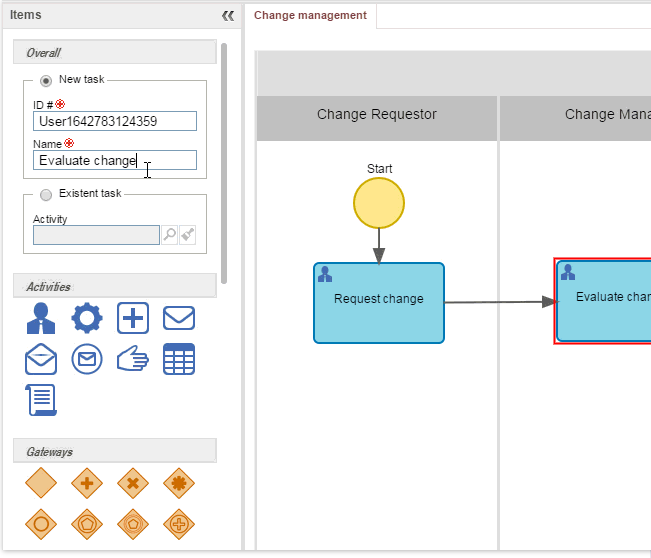
- PROCESS SIMULATION
Process simulation to identify bottlenecks and optimization opportunities.
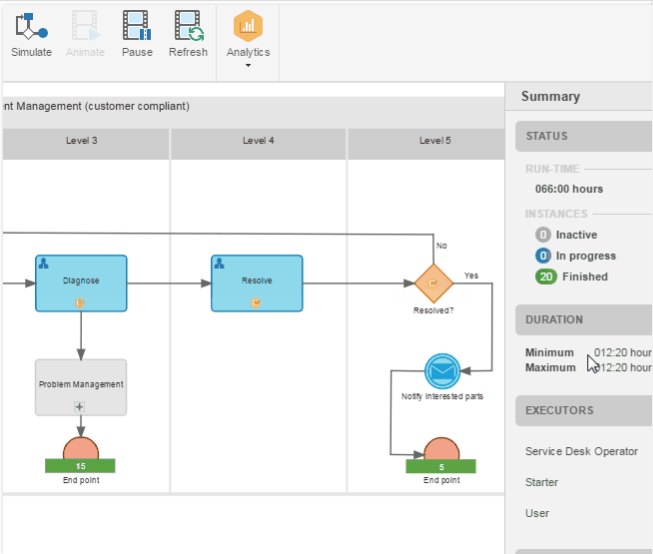
- RISK MANAGEMENT
Native process risk management.
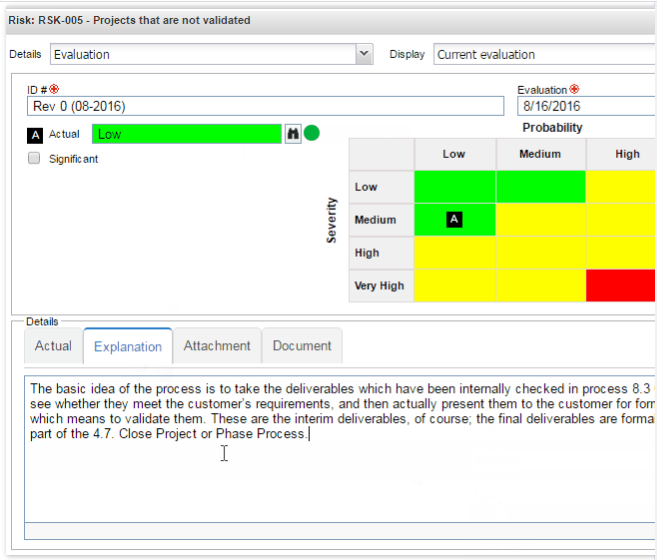
- TASK MANAGER
Centralized task manager, alerts and notifications.
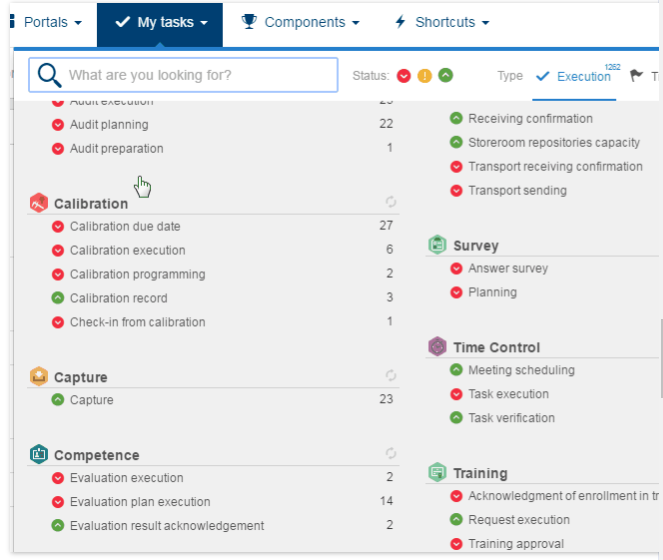
- INTEGRATION
Powerful web-services integration capabilities.
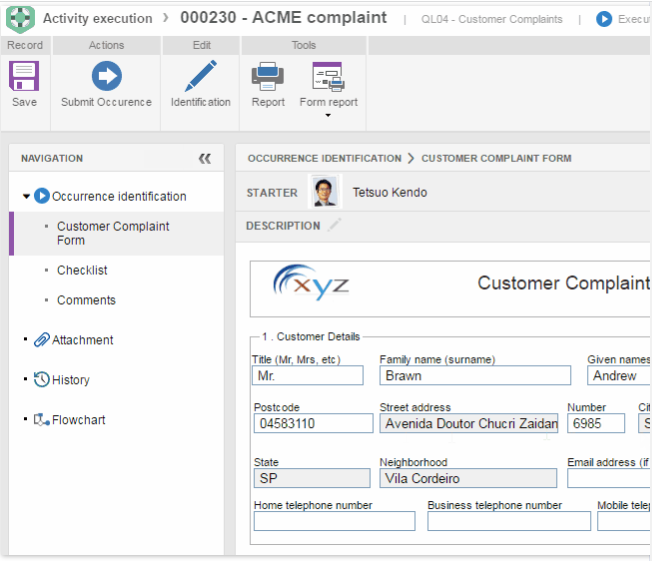
- REAL-TIME TRACKING
Real-time tracking through personalized KPIs and portals.

Return on Investment (ROI)
Today's business environment demands that organizations redouble their efforts to improve the efficiency of processes that have a positive impact on financial performance.
Organizations looking to grow revenue and decrease costs are increasingly using Business Process Management (BPM) to reach their goals. According to Gartner, 80% of enterprises using BPM will experience an internal rate of return better than 15 per cent.
Increasingly, Business Process Management is seen as a bottom line enterprise application and studies have shown that the ROI on BPM projects has been fantastic, with clients reporting initial ROIs in the range of 100% to 300% and payback timeframes of 6 to 12 months. This is because successful BPM projects are not technology decisions, they are business decisions. Business buyers rave about the ROI and often report 10-times ROI than their counterparts that buy BPM like it was an operating system or some other mundane infrastructure technology.
ROI is typically thought of as the measure of cost reduction or profit increase directly attributed to the investment taken. Commonly, when enterprise professionals discuss the ROI of an investment, they are mostly thinking of “financial” benefits. Today, organizations must also consider the “non financial” benefits of an investment.
Financial Benefits include impacts on the organization’s budget and finances, e.g., cost reductions or revenue increases. This is one aspect of ROI.
Non Financial Benefits are the so-called “intangibles”, “soft”, or “unquantifiable” benefits of an investment. These benefits can represent real ROI and include effects on business operations and productivity that do not directly translate into increased positive cash flow. These non financial benefits are most often centered on business critical activities required to meet the customer, partner or regulatory requirements of doing business. In this case, ROI represents the sustaining of the company’s business rather than increased profit or reduced costs.
SoftExpert BPM software produces positive impacts on five primary categories: Automation, Quality, Compliance, Management and Optimization (cost reduction / performance improvement). These include improved customer satisfaction, enhanced organizational agility, better access to resources and information, and shorter cycle-time.
The benefits calculation for BPM can be both direct, like reduction of workloads for existing staff, and indirect, like productivity or improved quality. Both should be measured for BPM business case efforts.
In conclusion, the majority of projects that have deployed SoftExpert BPM have been successful. There are many reasons for this. The solution offers substantive ROI benefits to three essential communities: the IT/Developer community; the business stakeholder; and the end user. If you combine the ROI effects for these three communities, you can easily get improvement ranging from low double digit benefits (10% and more) to well into the triple digits. This, of course depends on the project and type of application or deployment. But the key message remains that BPM ROI is real and can substantially improve the productivity of IT, the performance visibility as well as performance control for the business owners, and the efficiency of the end user through streamlining tasks and reducing potential errors.
Investment
- The investment in SoftExpert BPM will depend upon the business unit size and implementation approach.
Return on Investment (%)
- (((Total Annual Savings x n years) – Initial Investment) / Initial Investment) x 100.
Payback Period (years)
- Initial Investment / Total Annual Savings.
NON FINANCIAL ROI:
- Produces motivated employees, and happier customers.
- Improves business agility and readiness by increasing process efficiency.
- Ensures optimum resource utilizations due to process standardization.
- Improves process control, process optimization and rapid change.
- Promotes collaboration between IT and business users to document and implement the process.
- Manages the changes to organizations in terms of roles, structure and activities.
- Integrates with existing applications in a meaningful way.
- Monitors the performance of individual processes or aggregates and potentially identifies trends.
- Dynamically changes the business rules that drive your processes, to achieve your performance goals.
- Increases productivity due to process automation.
- Reduces the time needed to adjust process to changes on the market.
- Provides managers with exception handling capabilities.
- Reduces the number of tasks done manually and automatically decreases the number of resources needed.
- Saves time by centrally managing all business processes.
- Increases customer retention rate, reputation, market share and revenue by improving customer satisfaction.
- Provides integration of compliance management capabilities into current business processes to support regulatory compliance.